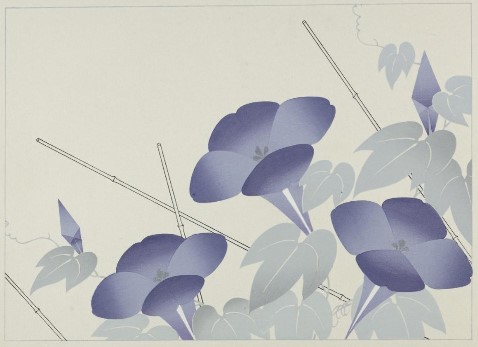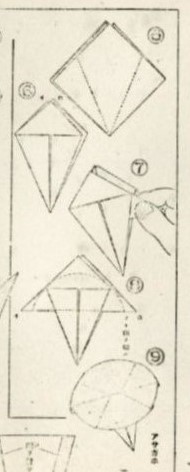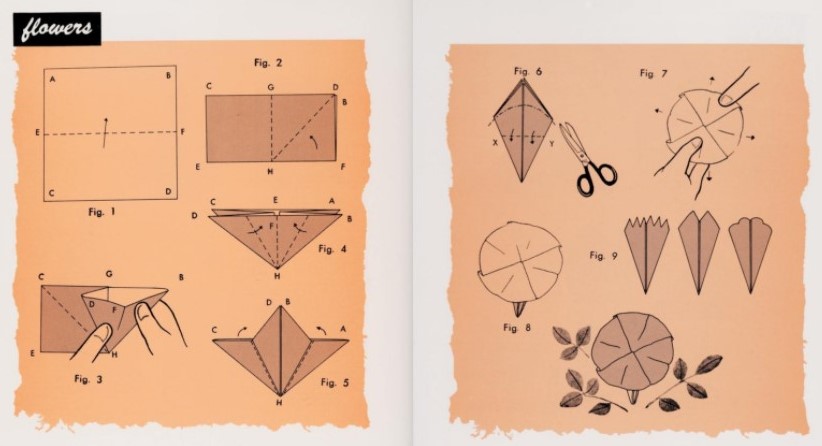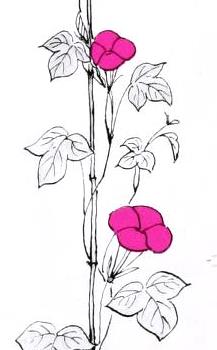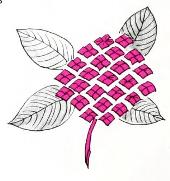| The Public Paperfolding History Project
Last updated 7/12/2024 x |
|||||||
| The Morning Glory (Cut) / Carnation (Cut) / Hydrangea | |||||||
| This
page attempts to record what is known about the origin
and history of the designs known as the Morning Glory
(Cut) and Carnation (Cut). Please contact me if you know
any of this information is incorrect or if you have any
other information that should be added. Thank you. In the Morning Glory design, a circular cut is used to shape the head of the flower. In the Carnation the cut is more complex and is used to create a ragged edge. A version of the fold without cuts can be used to create a Hydrangea. This design first occurs in the books of Isao Honda and is quite possibly his original design. ********** 1931 As far as I know this cut design first appears in 'Origami (Part 1)' by Isao Honda, which was published in Japan in 1931.
********** The design also appears: 1935 In 'Origami Moyo, Book Two' by Kawarazaki Kodo, which was published in Japan in 1935, contains a print titled 'asagao' (which means 'morning glory') and is probably meant to illustrate this design.
********** 1944 In 'Origami Shuko' by Isao Honda, which was published in 1944.
********** 1951 A five-petalled version of the design folded from a pentagon appears in 'Origami to Kirinuki' by Saburo Ueda, which was published by Kokkado in Tokyo, most probably in 1951.
********** 1957 The Morning Glory appears in 'Origami: Japanese Paper Folding', which was published in English by Toto Shuppan Company Ltd in Tokyo in 1957.
********** Both the 'Morning Glory' and the 'Carnation' appear as 'Flowers' in 'Origami: Book One' by Florence Sakade, which was published by the Charles E Tuttle Company in Rutland, Vermont and Tokyo in 1957.
********** 1960 As 'A Morning-Glory' in 'All About Origami' by Isao Honda, which was published by Toto Bunka Company, Limited in Tokyo in 1960.
********** As 'A Morning-glory' in 'Pocket Guide to Origami: Bunny Book', by Isao Honda, whioch was published in English by the Asahi Origami Club (an imprint of the Toto Shuppan Company) in Tokyo in 1960.
********** 1965 As 'Morning Glory' in 'The World of Origami' by Isao Honda, which was published in the USA by Japan Publications Trading Company in 1965.
The Independent Creativity chapter shows how a Carnation can be made by varying the shape of the cut.
********** 1967 As 'Morning Glory' in 'Origami Folding Fun: Kangaroo Book' by Isao Honda, which was published by Japan Publications Inc in Tokyo in 1967.
********** 1968 'Origami in the Classroom: Book 2: Activities for winter through summer' by Chiyo Araki, which was published by Charles E Tuttle Co Inc in 1968, contains diagrams for both the Carnation and the Moring Glory and uses the uncut version to create a Hydrangea'
********** 1970 As 'Morning Glory' and 'Carnation' in 'Origami Nippon' by Isao Honda, which is a paperback book published by Honda Origami Studio in Tokyo in 1970. The text says 'Morning Glories are idea for collage crafts, so we have also included instructions on how to cut the sepals.'
********** |
|||||||

